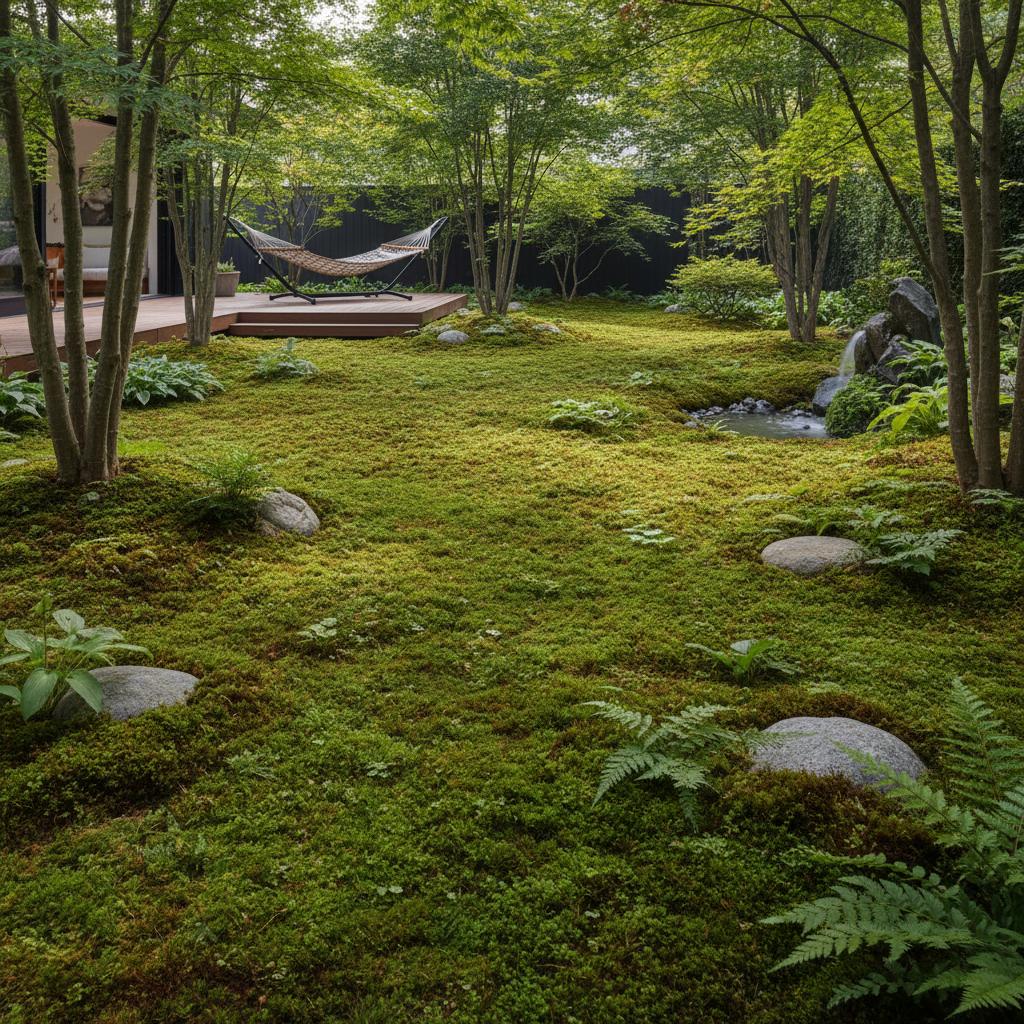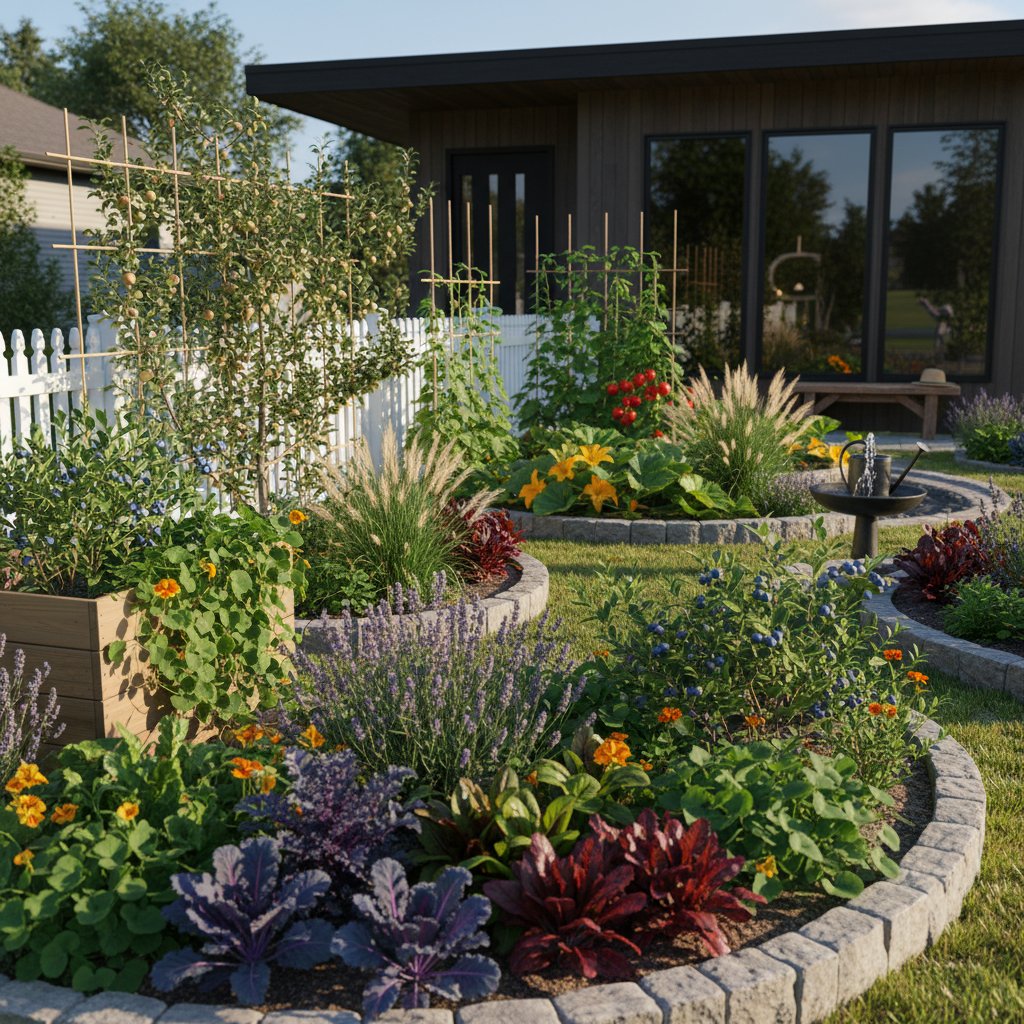Edible Hedges for Privacy and Productive Harvests
Do you ever examine your yard and sense a conflict between the desire for seclusion and the wish for a vibrant, yielding landscape? Perhaps the existing fence appears barren, or the current shrubs occupy space without offering substantial returns. The solution lies in boundaries that serve multiple purposes. Edible hedges achieve this balance by providing structure, nourishment, and habitat simultaneously.
Understanding Living Borders
An edible hedge consists of a row of plants that establishes a barrier while yielding fruits, nuts, herbs, or vegetables. This approach replaces inert fencing with a dynamic wall that evolves seasonally. Spring brings fragrant blooms that attract pollinators. Summer delivers ripe berries and fruits for immediate use. Winter maintains form through persistent branches and foliage, shielding against elements like wind and sound.
Homeowners who value integrated functionality find this method particularly suitable. Each task, from pruning to harvesting, fosters a deeper bond with the environment. The hedge functions as both a scenic element and a source of sustenance.
Step One: Evaluate Your Site and Requirements
Commence by conducting a thorough inspection of your yard. Observe sunlight patterns along the borders, soil drainage characteristics, and the degree of screening desired. Certain properties require a high, impenetrable hedge for full view obstruction. Others suit a gentler partition that delineates edges while permitting airflow and illumination.
Reflect on preferred flavors and applications. Consider enthusiasm for berries in summer, nuts in fall, or perennial herbs for culinary enhancement. Align selections with daily routines and culinary interests to ensure the hedge delivers satisfaction over obligation.
Essential Planning Strategies
- Document sunlight exposure and shade zones using a journal or basic diagram.
- Verify absence of subsurface utilities or irrigation systems that could hinder root expansion.
- Determine desired mature height and acceptable upkeep levels.
Such deliberate evaluation minimizes future setbacks and promotes seamless integration with the existing landscape.
Selecting Suitable Edible Plants
Plant choice represents the most engaging and individualized phase of hedge development. Optimal selections hinge on local climate zones, soil composition, and aesthetic preferences.
Fruit-Producing Shrubs
- Blueberries: These develop into compact, upright forms with lustrous foliage that shifts to vivid crimson in autumn. They thrive in acidic conditions with steady hydration, yielding antioxidant-rich berries from mid-summer.
- Blackberries and Raspberries: Rapid establishment creates a verdant barrier; opt for thornless cultivars to simplify collection. Expect harvests over several weeks, with canes requiring biennial renewal for sustained productivity.
- Currants and Gooseberries: These remain contained and tolerate partial shade, ideal for compact lots. Red or black currants provide tart berries suitable for jams, while gooseberries offer versatile fruits for pies or fresh eating.
Larger Trees and Specimens
- Hazelnut: This multi-stemmed shrub or modest tree delivers privacy alongside autumn nuts. Plant in pairs for cross-pollination to maximize yields, with catkins adding early-season interest.
- Serviceberry: Spring displays delicate white flowers, followed by blueberry-like fruits in June. Its adaptability to various soils and moderate height make it a staple for mixed borders.
- Elderberry: Vigorous growth ensures quick coverage; harvest dark berries in late summer for cordials, wines, or baked goods. Note that flowers also serve as edible garnishes.
Herbal and Scented Components
- Rosemary: This perennial evergreen builds a low, aromatic foundation, enduring drought once rooted. Harvest sprigs year-round for roasting or infusing oils.
- Lavender: Purple spikes enhance borders with fragrance and draw bees; trim post-bloom to sustain shape and encourage reblooming.
- Bay Laurel: Dense, leathery leaves supply cooking essentials; its resilience to clipping maintains a formal outline in mild climates.
Integrate varieties for stratification, which imparts dimension and prolongs edible output across months.
Site Preparation and Installation
After finalizing selections, clear the area of weeds and aerate the upper soil profile. Incorporate well-rotted compost to boost nutrient retention and microbial activity. Position plants at intervals matching their anticipated spread, allowing room for natural infilling without competition.
Saturate the soil post-planting to anchor roots securely. Apply a two-inch layer of organic mulch, such as bark or leaves, to conserve water and deter weed emergence. During the initial year, provide supplemental irrigation weekly, adjusting for rainfall to support establishment.
For mixed plantings, situate taller species at the rear and understory options forward. This configuration optimizes light distribution and yields a graduated, naturalistic profile.
Promoting Healthy Development and Shape
Monitor growth to apply formative pruning that fosters bushiness. Annually trim in late winter or post-harvest, targeting outward buds to thicken the structure and avert sparse lower growth. Balance this with fruiting needs, as some plants like berries fruit on new wood.
Apply balanced organic amendments in spring and fall to sustain vigor. Inspect regularly for issues such as aphids or powdery mildew; respond with hand-removal, neem applications, or ladybug releases to preserve natural equilibrium.
Frequent harvesting stimulates further production and prevents overburdening. This ongoing interaction reveals plant responses to conditions, refining your approach for optimal border vitality.
Integrating Aesthetics and Utility
Edible hedges rival traditional ornamentals in elegance when composed thoughtfully. Blend leaf shapes and hues, such as rosemary's needle-like greenery against lavender's woolly gray. Incorporate blooming elements like serviceberry for periodic floral accents that transition to fruit.
Enhance access with gravel paths or low retaining walls adjacent to the hedge. Dedicate adjacent beds to companion plants that deter pests, like marigolds near berries. Prioritize equilibrium between form and function to position the hedge as a deliberate landscape asset.
Sustaining Seasonal Rewards
With consistent attention, the hedge evolves into a testament to stewardship. Pollinators flock to initial flowers, birds relish maturing fruits, and structure offers winter refuge. Extended outdoor time becomes routine, compelled by evolving scents and visuals.
Persist with routine interventions: targeted pruning, timely nutrition, and prompt gathering. Beyond seclusion, these gardens illustrate the harmony of utility and allure. Through each cultivated element and collected yield, the space gains vitality, individuality, and nourishment.



